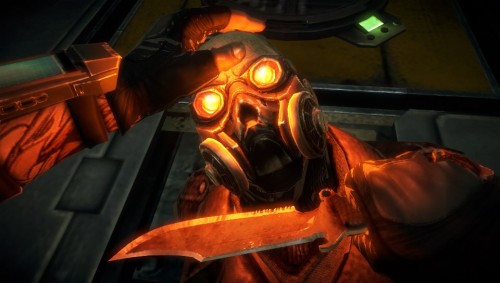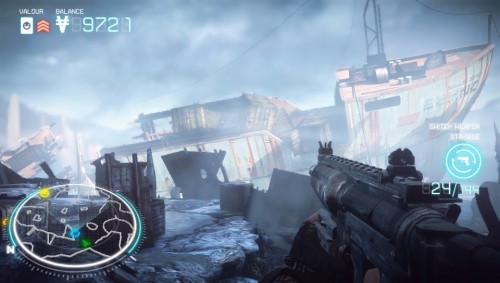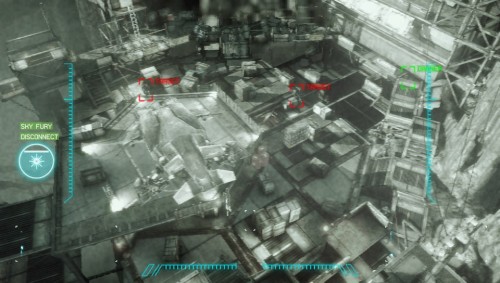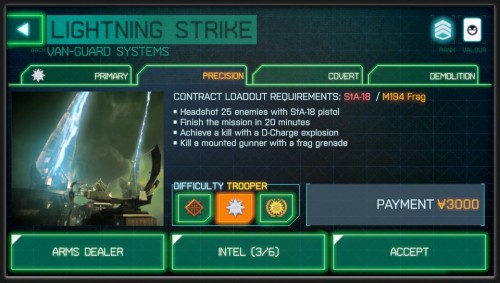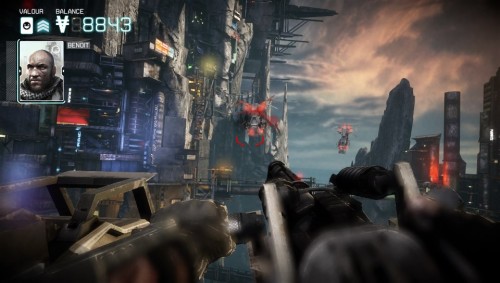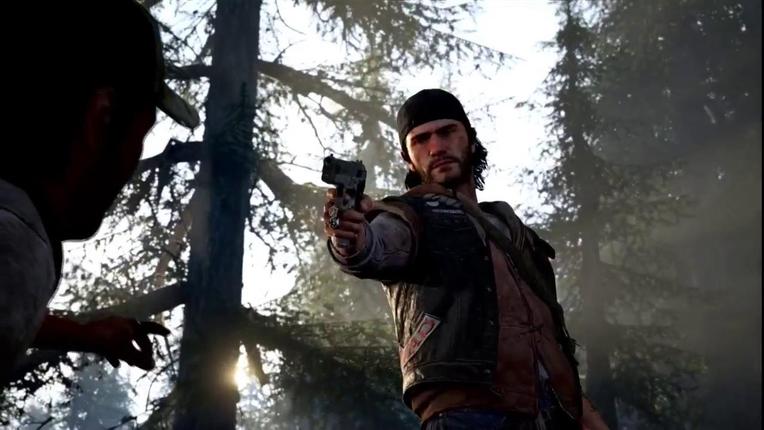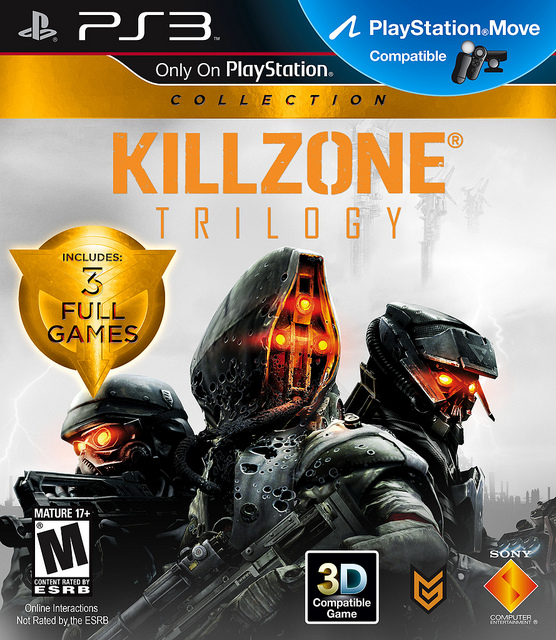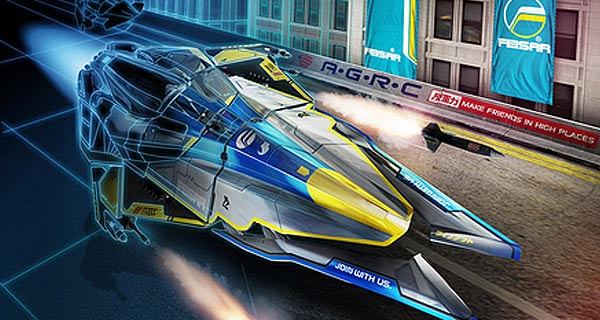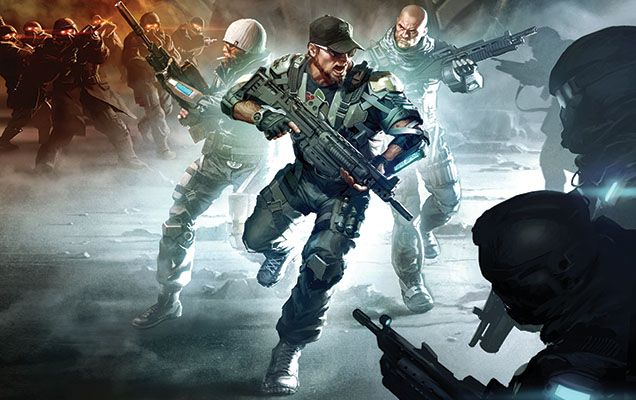
Alongside the launch Sony’s PlayStation Vita was Uncharted: Golden Abyss, a mainline franchise spin-off developed by SCE Bend Studio. Obvious concessions were made to the presentation, given the PlayStation Vita is not a PlayStation 3, but Bend had done an admirable job in making Golden Abyss as authentic and convincing as it could be, and I believe most fans were pleasantly surprised with how faithful this portable adventure matched the console trilogy.
Since launch, Sony has generally avoided moving proprietary intellectual properties exclusively to the Vita in any significant way, instead focusing publishing rights on down-ported PlayStation 3 titles, smaller independent goodies, and the occasional so-so franchise offshoot like Resistance: Burning Skies. However, starting with early/mid this year and moving forward, the publisher/developer does appear to be making a bigger push for original, exclusive Vita goodies. We’ve already seen Keiji Inafune’s Soul Sacrifice surprise hardcore gamers, and at the tail end of 2013 we’ll be delighted with Media Molecule’s Tearaway.
Slotted nicely in-between those gems is Killzone: Mercenary, a return to Sony’s library of system selling franchises and, like Uncharted: Golden Abyss, putting a large emphasis on authenticating that console formula for a handheld system. It’s been a long time coming, a very early tease courtesy of the platform’s first reveal, but I’m happy to state that the wait has been worth it, cementing Guerrilla Cambridge at least on par with Bend in handling Sony’s properties with the greatest of care.
Killzone: Mercenary takes a break from the carnage of war for a narrative centred around, you guessed it, mercenaries. Guns-for-hire that hold no particular allegiance to ISA or Helghast, instead happy to capitalise on the economy of war and make those big bucks at whatever the cost, even if that cost is morally questionable. Though this premise has the potential to provide interesting insight into the events covering both the original Killzone and Killzone 2, from the perspective of both sides and how they behave outside of the front-lines, Mercenary never really exploits this. There’s the occasional thought provoking questioning of internal ISA operations and the way Helghast military treat Helghan civilians, but the central narrative stays firmly planted on a largely forgettable tale of mercenaries finding reason and morals amidst a bloody war.
Told through briefing cut-scenes and radio chatter from a cast of mixed vocal talent (shout-out goes to the deadpan “Oh yes, I like how they burn”), Mercenary‘s story is presented well enough to guide you logically between objectives and through environments, but never enough to grip you with a memorable journey from a character perspective. Locations themselves will instead act as narrative highlights, a handful of decently directed scripted sequences and gorgeous environmental vistas leaving the largest impact. To Mercenary‘s credit the diversity of environments is impressive enough, taking you across a number of visually distinct locals, though on a couple of occasions retreads portions of earlier stages. This isn’t unusual for any game, but when your campaign levels are limited to nine, it does show limitations.
Still, Mercenary‘s story isn’t offensively bad, it’s just pretty standard war time stuff with a sci-fi twist, so about on par for the rest of the franchise so far. I do think that if there’s any area Mercenary had a good chance to differentiate from the previous games it’s in the difference of taking contracts from both ISA and Helghan, but the significance of the latter is glossed over by maintaining the Helghan Empire as the poster-child “bad guys”.
Story aside, I was impressed to see Guerrilla Cambridge had a solid vision for Killzone on a portable platform. While Killzone 2 and Killzone 3 rest atop large scale encounters the Vita hardware could never replicate, Mercenary personalises the encounters with fewer opponents, enclosed environments, and best of all more open design.
Mercenary actually reminded me of shooters from the GoldenEye and No One Lives Forever era, or more recently the GoldenEye reboot. While you’ve still access to more or less every mechanic from the console titles (sprint, slide, cover, and so on), compartmentalised encounter zones challenge you to attempt either a silent or aggressive approach. Playing as the former, you’ll need to carefully observe enemy patrols and use silenced weapons or touch based melee take-downs to isolate opponents out of sight, while the latter will trigger alarms and give you more fodder to fight. Mercenary is really at its best when it’s emphasising the former, as it’s not unusual for levels to provide alternate paths and vantage points that cater for different tactical play. Focusing on smaller encounter zones and fewer enemy counts while challenging you to stealth through also feels very much at home on the portable hardware, Mercenary in no way trying to play catch-up to the series’ foundations.
But Mercenary is still a Killzone at heart, and so you’ve got those scripted encounters that sadly regress to defending a small area against a set number of waves. That’s not to say combat isn’t fun; it is. Unlike Golden Abyss, Mercenary‘s hit response and feedback of weapons feels responsive and satisfying, the sensation of taking a dude down avoiding the problematic spongy impacts and imprecise hit-boxes that so many portable titles suffer. The issue is that Mercenary‘s more action packed set-pieces provide less stimulating entanglements than the stealth. Hit-boxes, satisfying they might be, seem a little generous in the cranial area, landing easy head-shots. AI, though serviceable, rarely puts up any intelligent opposition. Vanguard equipment, while enjoyable, is easily exploitable greatly in your favour (one boss was defeated by spamming porcupine missile). And the cramped levels provide easy opportunity to bottleneck legions of opponents. Boss fights are equally disappointing, relying on that tired old formula of taking and buffing a standard human’s health for the sake of artificial challenge (though points are given for at least two boss fights having optional stealth take-downs, if amidst carnage).
Though I can appreciate the implementation of traditional Killzone encounters to appease fans, I can’t help but feel it works against Mercenary‘s strength. A lot of effort has been put into providing on-the-go customisable load-outs and encounter zones mixing patrolling guards and security cameras, followed up with areas that force you into traditional combat while never hitting noteworthy highs or pressuring your skills, nor offering the alternate rout diversity of stealth zones. Mercenary feels like it’s taking a step back for every step forward, a phrase I feel also describes the controls. I could never shake the feeling something was off about the analogue aiming, as if the dead zone size and acceleration shaping leads to a weird sensitivity curve where faster turning kicks in too suddenly. Optional gyro controls when aiming down the sight are a very welcome addition, but could do with a sensitivity increase, as even at maximum I felt my gyro aiming window was a bit too small.
On the other hand, Guerrilla Cambridge has made smart decisions to explore campaign replay value that warrants long term investment. Load-out tweaking encourages you to mix up equipment and try runs with a different combat flavour, and intel hidden behind both touch mini-game terminals and high ranking generals (that require a stealth takedown) give collect-em-all players a lot of padding to hunt down, if just to expand the lore. However, it’s the operation variants that really seal the deal.
While the campaign alone will last you around five hours, give or take depending on play style, operation variants give you an assortment of secondary achievement-like criteria to meet as you make your way through a stage. Each of the nine stages has three variants next to standard: Precision/Covert/Demolition. These themed runs demand requirements like beating a level with a specific loud-out and within a set time, stealthing through designated zones, making use of more inventive level set pieces, defeating a boss in a particular way, destroying security cameras, and more. Much like the opportune stealth, these optional runs give you a real mechanical challenge to replay campaign levels within specific style requirements. This is the kind of replay value that I really wish more shooters would employ. Guerrilla Cambridge did just miss the mark with the leaderboards though, which only comparing overall campaign performance, while I think could have benefited from individual mission performance ranking.
But I’m going to guess that if you’re connecting online you’re not doing so for leaderboards, but to play the bloody game. And here Mercenary excels. You’ve got a full eight player supported traditional Killzone experience that plays just as you’d imagine. It’s a little light on game modes and variable tweaking, but what’s there works well. Killzone enthusiasts will probably scoff at an eight player limit, but Mercenary isn’t trying to be a console Killzone. Instead, each of the six maps have been designed with this player limit in mind, and all but one (Inlet, based on Killzone 2‘s beach landing) have layouts that made for enjoyable encounters.
The brutal intensity and visceral impact of Killzone‘s trademark multiplayer is retained with Mercenary, though perhaps not to same level of polish. Vanguard capsules that drop throughout the map reward lucky players with one of many vanguard equipment, though their usefulness varies and at times borderlines on the grossly overpowered. I also found the spawn points to be in need of work, occasionally respawning me mere meters away from the exact same fire-fight I perished in, giving me a somewhat unfair advantage to my unsuspecting opponent.
So while a balanced playing field can be called into question, Mercenary‘s multiplayer offering is still a tremendous amount of fun. To be frank, it’s probably the standard to which all other portable/mobile multiplayer shooters should be judged, because I cannot think of another game that does it better.
And finally, it wouldn’t be a Killzone game without absurd graphics, and with Killzone: Mercenary what is there to say? If you’ve seen any of the trailers you’re already aware of how gorgeous it looks, but you won’t truly realise it until it’s in your hands. Killzone: Mercenary is without a shred of doubt one of, if not the crowning jewels in technical accomplishments for a portable system. I’m under the impression many assets from both Killzone 2 and Killzone 3 have been recycled for Mercenary, and they hold up amazingly well, the game as a whole managing an astoundingly wide palette of shaders and effects to render a game that at first, second, and third glance could easily be mistaken for a console title, deficiencies really just devils in the details. Graphical connoisseurs will not be disappointed.
Whether or not impressive presentation is enough to elevate Mercenary above its issues will be subjective. For me, it’s not quite enough. Don’t get me wrong, Mercenary is an impressively well constructed portable shooter. Guerrilla Cambridge took steps with the campaign that I’d like to see in other modern shooters, giving the series a boost of design diversity in player agency that I think even the mainline Killzones could seriously benefit from. But I do wish it was more consistent, and didn’t so routinely fall back on weaker gameplay. Despite being a Killzone game in name and play, I never found the heavy action set-pieces and linear stretches of level design to highlight what Mercenary did best.
There’s still room for improvement and growth, and I’d have said the same thing about Killzone 2 and Killzone 3. However, in Mercenary‘s favour, it alone has elements that should be adopted by the mainline series, and that deserves credit. Even with its occasional misdirection and failure to capitalise on potential, it’s absolutely a well proper Killzone game in the palm of your hands, sure to please long term series fans, and even push some of those over the edge to finally pick up a Vita.
Flexible stealth encounters | Gorgeous graphics | Multiplayer
Regresses to action too often | Drab story | Control quirks

